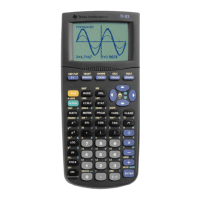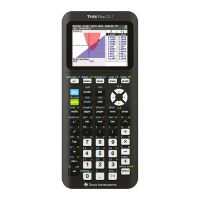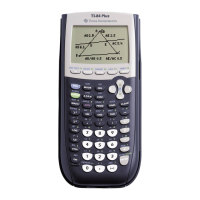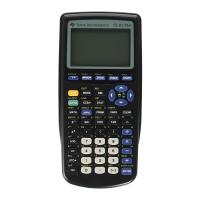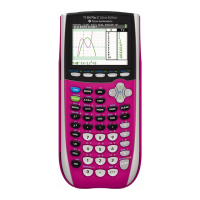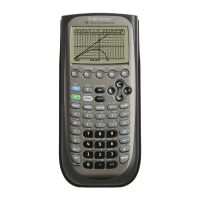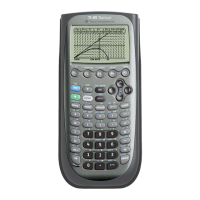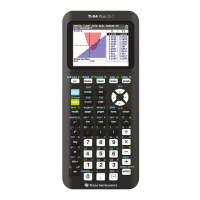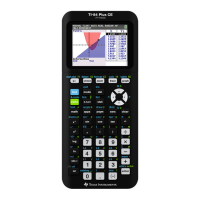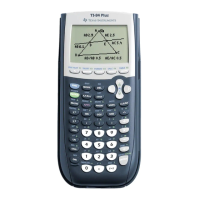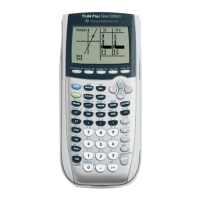TI-89 Guide
TI89-15
Copyright © Houghton Mifflin Company. All rights reserved.
1.1.10 SUMMARY OF ESTIMATING AND SOLVINGMETHODS Use the method you prefer.
When you are asked to estimate or approximate an output or an input value, you can:
• Trace a graph (Section 1.1.4)
• Use close values obtained from the TI-89 table (Sections 1.1.3, 1.1.5, 1.1.7)
When you are asked to find or determine an output or an input value, you should:
• Evaluate an output on the graphics screen (Section 1.1.3)
• Evaluate an output on the home screen (Section 1.1.5)
• Evaluate an output value using the table (Section 1.1.6)
• Find an input using the solve instruction or the numeric solver (Sections 1.1.7, 1.1.8)
• Find an input value from the graphic screen (using the x-intercept
method or the intersection method) (Section 1.1.9)
1.3 Constructed Functions
Your calculator can find output values of and graph combinations of functions in the same way
that you do these things for a single function. The only additional information you need is how
to enter constructed functions in the graphing list or on the home screen.
1.3.1 FI NDI NG THE SUM, DI FFERENCE, PRODUCT, QUOTI ENT OR COMPOSI TE
FUNCTI ON Suppose that a function f has been entered in
y1
in the
Y=
list or defined as
y1(x)
and that a function g has been entered in
y2
in the
Y=
list or defined as
y2(x)
. Your TI-89 will
evaluate, graph, and actually find the symbolic form of these constructed functions:
Enter
y1(x)
+
y2(x)
to obtain the sum function (f+g)(x)=f(x)+g(x).
Enter
y1(x)
–
y2(x)
to obtain the difference function (f–g)(x)=f(x) – g(x).
Enter
y1(x)
*
y2(x)
to obtain the product function (f
⋅
g)(x)=f(x)
⋅
g(x).
Enter
y1(x)
/
y2(x)
to obtain the quotient function (f÷g)(x)=
fx
gx
()
()
.
Enter
y1
(
y2(x)
)
to obtain the composite function (f
o
g)(x)=f(g(x)).
1.3.2 FI NDING A DIFFERENCE FUNCTION We illustrate this technique with the functions
that are given on page 31 of Section 1.3 of Calculus Concepts:Sales=S(t) = 3.570(1.105
t
)
million dollars and costs = C(t)=
−
39.2t
2
+ 540.1t + 1061.0 thousand dollars t years after 1996.
We use the functions on the home screen, but you can also use the
Y=
list locations. However, if
you are in the
Y=
list, the symbolic form of the constructed function is not displayed.
NOTE: Before you start a problem in which you want a symbolic result (i.e., aformularather
than a number), clear all individual letter variable names with
2nd F1 [F6] 2 [NewProb]
ENTER
or
2nd F1 [F6] 1 [Clear a-z] ENTER
. (See the warning message on the next page.)
On the home screen, define S with
F4 [Other] 1 [Define] alpha
3(S) (
T
) = 3 . 570 ( 1 . 105 ^
T
) ENTER
and
define C with
F4 1 [Define] alpha ) (C) (
T
) =
(
−
)
39
.
2
T
^ 2+
540
.
1 T
+
1061
ENTER .
•
As we previously mentioned, you can use any input variable on the home screen. We
choose to use t because it is given as the input variable in the text illustration. However, if
you prefer x, replace every t by x in the instructions.
